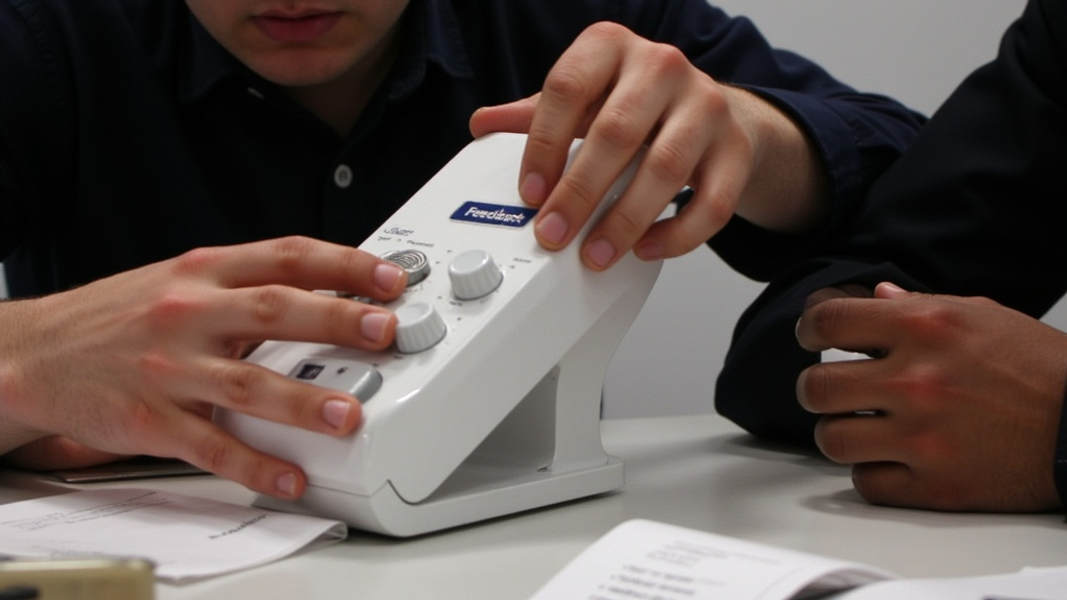
Have you ever wondered how tech companies make sure their products work well before everyone starts using them? That's where beta testing comes in. This guide will explain what beta testing is, why it's so important for making great products, and how you can join in on the fun.
Understanding Beta Testing
What Beta Testing Means
Beta testing is when a company lets real people try out a new product before it's officially released. It happens after the company has done its own testing (called alpha testing) but before the product is available for everyone to buy or use.
During beta testing, people use the product in their everyday lives. This helps find problems that the company might have missed. It's like a dress rehearsal for a play, but for tech products.
Why Companies Do Beta Testing
Companies do beta testing for a few key reasons:
-
To find bugs: Beta testers often spot problems that the company's own testers didn't see.
-
To see if people like it: Companies want to know if their product is easy to use and if people enjoy it.
-
To check if it solves a problem: Beta testing helps make sure the product actually does what it's supposed to do.
Different Kinds of Beta Tests
There are a few ways companies can do beta testing:
-
Closed Beta: Only a small group of chosen people get to try the product. These might be loyal customers or tech experts.
-
Open Beta: Anyone who wants to can join in and test the product. This is often used for big software or game releases.
-
Technical Beta: This focuses on making sure the product works well from a technical standpoint, like checking if a website can handle lots of users at once.
How Beta Testing Works
Planning the Test
Before a beta test starts, companies need to do some planning:
First, they decide what they want to learn from the test. Maybe they want to know if people can easily use a new feature, or if the product works well on different devices.
Next, they choose who will be in the test. For a new social media app, they might want people of different ages. For a work tool, they might pick people from various jobs.
They also decide how long the test will last. It could be a few days or several months, depending on what they're testing.
Running the Test
Once the planning is done, it's time to start testing:
The company gives beta testers access to the product. This might mean downloading an app or getting a special link to a website.
Testers get clear instructions on what to do and how to share their thoughts. There's usually a way for testers to report problems or suggest ideas easily.
Looking at the Results
After the test, the company looks at all the feedback:
They gather all the comments, bug reports, and suggestions. Then they sort through this information to find the most important issues.
The team decides which problems to fix first and which new ideas they might want to add.
Making Changes
Based on what they learned, the company makes changes:
They fix the biggest problems that testers found. They might also change how things work if many people found something hard to use.
Sometimes, they add new features that beta testers suggested.
Why Beta Testing is Great
Good for Companies
Beta testing helps companies in several ways:
It leads to better products because real people have tried them out. This means fewer problems when the product is officially released.
It can save money and time. Fixing problems early is often easier and cheaper than fixing them after a product is out.
Beta testing can also create buzz. When people try a cool new product, they often tell their friends about it.
Good for Users
Beta testing isn't just good for companies. It's also great for the people who participate:
Testers get to try new things before anyone else. It's like getting a sneak peek at an upcoming movie.
They can help shape the product. Their feedback might lead to new features or make the product easier to use.
Some companies give rewards to beta testers, like discounts or special access to other products.
Real Examples of Successful Beta Tests
Gmail's Long Beta
Google's Gmail is a famous example of a long beta test:
Gmail was in beta for years, from 2004 to 2009. During this time, millions of people used it.
At first, you could only join if someone invited you. This made people really want to try it.
Google kept adding new features based on what users liked and didn't like. By the time Gmail was officially released, it was already very popular.
Minecraft's Community-Driven Development
Minecraft, the popular building game, used beta testing in a unique way:
The game's creator released early versions to players and kept updating based on their feedback.
Players suggested many features that are now key parts of the game, like different types of blocks and creatures.
This approach helped create a strong community around the game even before it was finished.

Atlassian's Targeted Approach
Atlassian, which makes tools for work teams, uses a smart way to do beta testing:
They use something called feature flags. This lets them turn new features on or off for different groups of users.
This way, they can test new things with just a few users without changing the product for everyone else.
It helps them get detailed feedback on specific parts of their products.
How to Join Beta Tests
Finding Opportunities
If you want to be a beta tester, here's how to find chances:
Check the websites and social media of companies you like. They often announce beta tests there.
Look for beta testing websites. These sites list opportunities from many different companies.
Join online communities about products you're interested in. Companies sometimes look for testers in these groups.
Being a Good Beta Tester
To be helpful as a beta tester:
Give lots of details when you find a problem. Explain exactly what you were doing when something went wrong.
Be honest about what you like and don't like. Companies want your real opinion.
Follow the instructions carefully. This helps make sure the company gets the information they need.
Things to Think About
Before you join a beta test, remember:
The product might not work perfectly. It might crash or lose your data sometimes.
Some beta tests are secret. You might need to agree not to talk about what you're testing.
What's Next for Beta Testing
New Ideas in Testing
Beta testing is changing as technology advances:
Some companies are using AI to help sort through beta test feedback. This can help them spot important issues faster.
Many products now have ongoing beta tests. Instead of one big test, they keep testing new features all the time.
Challenges and Opportunities
As beta testing evolves, there are new challenges and chances:
Companies need to balance making products quickly with making sure they work well. Beta testing helps with this, but it can be tricky to get right.
With so much data from beta tests, companies are finding new ways to use this information to make even better products.

Frequently Asked Questions
How long does a beta test usually last?
Beta tests can last anywhere from a few days to several months. It depends on what's being tested and how complex the product is. A simple app might have a short beta, while a big video game could have a beta that lasts for months.
Can I get paid for beta testing?
Most beta testing is unpaid, but some companies offer rewards. These might include early access to the final product, discounts, or sometimes even money. However, the main benefit is usually getting to try new products before others.
Is beta testing the same as user testing?
While they're similar, they're not exactly the same. Beta testing happens with a nearly finished product and often involves many users. User testing is usually done earlier in development with fewer people and focuses more on how easy the product is to use.
What happens if I find a big problem during a beta test?
If you find a serious issue, report it right away using the method the company provided. They'll likely want to know all the details so they can fix it quickly. Your discovery could be really important for improving the product.
Do I need special skills to be a beta tester?
For most beta tests, you don't need special skills. Companies often want regular people who will use the product normally. However, some technical beta tests might look for people with specific knowledge or experience.
Beta testing is a key step in making sure new products work well and meet people's needs. It gives companies valuable insights and lets users shape the products they'll use. Whether you're curious about new tech or want to help improve the tools you use every day, beta testing can be a fun and rewarding experience.
For entrepreneurs and startup founders looking to gather potential beta testers quickly, FastWaitlist offers a simple way to create a waitlist page. This can help you build excitement and collect contacts for your upcoming beta test.
Remember, the next time you use a great product, beta testers probably helped make it that way. And who knows? Maybe you'll be one of those helpful testers for the next big thing in tech.
